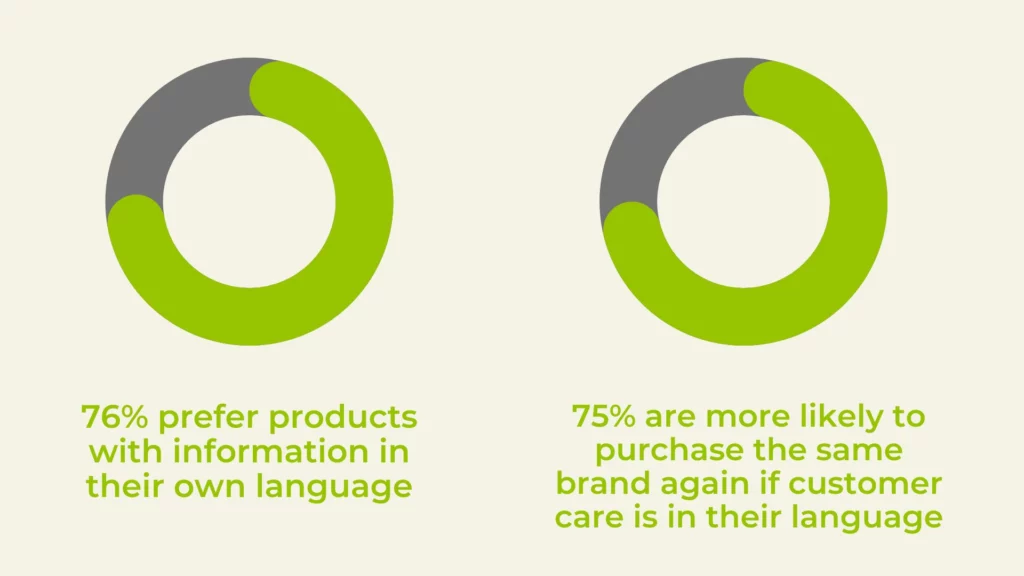Language Diversity is a growing and frequent characteristic of contemporary societies. In this blog entry, we will discuss the complex constitution of the linguistic maps of some territories commonly known as English-speaking, why it is important to identify and reflect language diversity, and how your company can achieve it.
Approaching linguistically diverse populations
In recent decades, globalization and migratory processes have shaped the demographics of cities. Among the cultural aspects associated with these transformations, we can highlight the growing language diversity that characterizes its population.
For example, New York City is home to 3.1 million immigrants, comprising nearly 38% of the city’s population and 45% of its workforce. More than 150 languages are spoken—the top ten other-than-English languages spoken at home are Spanish, Chinese, Russian, Haitian Creole, Bengali, Italian, Arabic, Korean, Polish, and French. Moreover, approximately 49% of immigrants are reported as Limited English Proficient (LEP), meaning that they speak English less than “very well.”
New York is just a well-known example of a linguistically diverse city. So is San Francisco in California, USA, where the Chinese community makes up 25% of the population and the Hispanic community makes up 18% of the population. Chinese (Cantonese and Mandarin) and Spanish were designated “threshold” languages when the city reached 10,000 Limited English Proficient (LEP) residents who speak one of these shared languages.
Meanwhile, the University of Manchester in the UK found that around 200 different languages are spoken in the city. In addition, data from the Education Service showed that more than 40% of Manchester’s primary school children speak an additional language to English in their homes. Community languages with the largest number of speakers are Urdu, Arabic, Chinese, Bengali, Polish, Panjabi, and Somali.
Similarly, the 2021 Census carried out in Canada, measured a range of linguistic concepts including mother tongue, language most often spoken at home, and other languages spoken regularly at home. Over 20 percent of Canadians reported a mother tongue other than English or French. Growing linguistic diversity reflects the nation’s growing immigrant population; the most common mother tongues were Mandarin, Punjabi, Yue (Cantonese), and Spanish.
Portraying language diversity means empowering consumers
Some linguistically diverse cities have enforced legal tools to ensure information accessibility to Limited English Proficient (LEP) residents. The designation of “threshold” languages in the city of San Francisco is an example of this. In 2021, New York Senate passed Bill S4716A to increase language access, requiring state agency websites to be translated into the 12 most widely spoken languages in the state. In 2022, the State of New Jersey introduced Bill S2459 which requires that State government entities provide vital documents and translation services in the 15 most common non-English languages.
However, while such laws went into effect, some are charged with not getting the required treatment. In the case of New York City, documents distributed by city agencies are often available in English alone, and sometimes in other languages such as Spanish and Chinese, but not the complete list, failing to reach all who need them. This matter has a direct effect on the right to access information. Although it is a matter of public agenda, we wonder what takeaways can global companies learn from this situation.
Limited English proficient (LEP) consumers frequently face significant barriers when trying to take part in the marketplace due to insufficient language access. These include completing key documents, managing bank accounts, resolving product-related problems, understanding consumer rights, and accessing educational or informative materials. In this context, reflecting language diversity in corporate and marketing communications can function as a way to empower consumers and bring them closer to your brand.
A 2020 report by independent market research firm CSA Research stated that, given the choice between buying two similar products, 76% of respondents will choose the one with information in their language. Also, local-language support creates stickier customer relationships, as 75% of respondents say that they’re more likely to purchase the same brand again if customer care is in their language. Meaning, most would rather think, act, and buy in their own language.

How to speak to all consumers in their own language
Companies should be mindful of the need to use languages other than English in some communications, and of making an effort of reaching customers in their mother tongue. To do so, you should establish a language access strategy.
Figure out how your products or services will reach consumers who are non-English speaking or have Limited English Proficiency (LEP). This would involve assessing and segmenting the number of non-English speaking consumers, and mapping the points of contact and the level of interaction in each case.
Then, in line with your policies and processes, consider the interpretation and translation services required. A professional Language Service Provider (LSP) like Win & Winnow will help you craft customized and comprehensive solutions that best address your needs.
Some touchpoints you may want to consider are:
- Call center, support service, or information line calls
- Websites and digital platforms
- Paper and electronic correspondence
- Written and printed materials and documents
- Product manuals
- Brochures intended for public distribution
- Presentations and corporate communications
- Virtual and in-person meetings and events
- Press releases and announcements
- Outreach programs or community initiatives
Our purpose at Win & Winnow is to enable life transformation through global communication and accessible information. We will support you with customized and comprehensive language solutions that help you deliver messages that are linguistically accurate and relevant among your diverse audiences. Get in touch to learn more!


